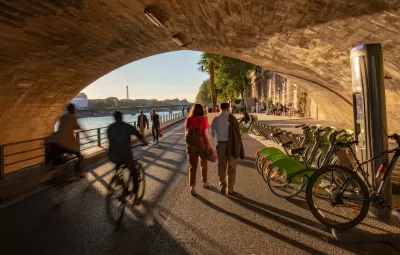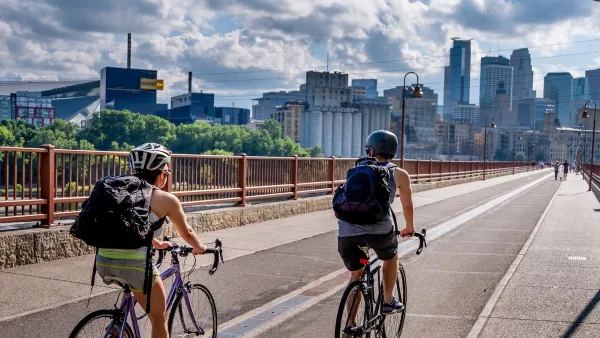The city’s efforts to improve its bike infrastructure are paying off in spades.

Bicycle usage doubled in Paris between October 2022 and October 2023, signaling the success of the city’s efforts to make its streets more bike-friendly. “But this is more than just a statistic—it’s a reflection of a broader societal shift towards sustainable mobility and urban renewal,” writes Ron Johnson in Momentum. According to Johnson, “Despite challenges like inclement weather, cyclists continue to flock to the streets, setting new attendance records and reshaping the urban landscape in the process.”
From leisurely rides along the Seine to daily commutes through bustling boulevards, cycling has become an integral part of Parisian life.
This is largely thanks to Mayor Anne Hidalgo’s administration, which has invested hundreds of millions of euros in expanding the city’s bike network and has set a goal of making Paris a “100 percent cyclable city.”
FULL STORY: Paris cycling numbers double in one year thanks to massive investment and it’s not stopping

Maui's Vacation Rental Debate Turns Ugly
Verbal attacks, misinformation campaigns and fistfights plague a high-stakes debate to convert thousands of vacation rentals into long-term housing.

Planetizen Federal Action Tracker
A weekly monitor of how Trump’s orders and actions are impacting planners and planning in America.

In Urban Planning, AI Prompting Could be the New Design Thinking
Creativity has long been key to great urban design. What if we see AI as our new creative partner?

King County Supportive Housing Program Offers Hope for Unhoused Residents
The county is taking a ‘Housing First’ approach that prioritizes getting people into housing, then offering wraparound supportive services.

Researchers Use AI to Get Clearer Picture of US Housing
Analysts are using artificial intelligence to supercharge their research by allowing them to comb through data faster. Though these AI tools can be error prone, they save time and housing researchers are optimistic about the future.

Making Shared Micromobility More Inclusive
Cities and shared mobility system operators can do more to include people with disabilities in planning and operations, per a new report.
Urban Design for Planners 1: Software Tools
This six-course series explores essential urban design concepts using open source software and equips planners with the tools they need to participate fully in the urban design process.
Planning for Universal Design
Learn the tools for implementing Universal Design in planning regulations.
planning NEXT
Appalachian Highlands Housing Partners
Mpact (founded as Rail~Volution)
City of Camden Redevelopment Agency
City of Astoria
City of Portland
City of Laramie





























